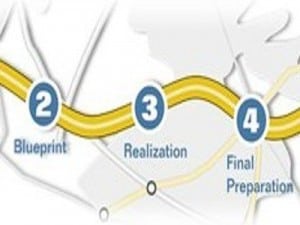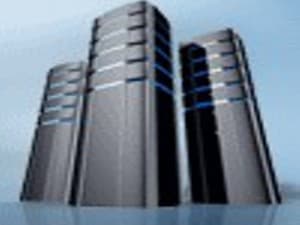
Many are unaware that SAP provides a broad set of tools and resources for Program Management and the Capability Maturity Model (or CMM). Few are familiar with SAP’s broad set of supports for this purpose, such as the ASAP Methodology Phase 6 “Run” enhancement. This enhancement is loaded with key information that aligns with Program Management responsibilities and CMMI (Capability Maturity Model Integration) [FN1].
So, what is CMM (or CMMI as it is more properly referred to)?
“CMMI (Capability Maturity Model Integration) is a process improvement approach that provides organizations with the essential elements of effective processes, which will improve their performance… CMMI models are collections of best practices that help organizations to dramatically improve effectiveness, efficiency, and quality” [FN1].
The entire CMMI methodology and development is maintained at Carnegie Mellon’s Software Engineering Institute. These CMMI standards have been applied in a vast number of organizations, together with various methodologies. The CMMI approach is well suited to engineering and software development, design, or implementation. SAP’s entire ASAP methodology, and especially the Run methodology, incorporates a number of CMMI principles.
SAP Program Management is all about Capability Maturity Management (or CMM).
The contract SAP program manager is accountable for providing the key tools, templates, techniques, and resources to ensure projects are properly managed and delivered for business benefit. If they are not providing this type of methodology guidance, including key templates and techniques to deliver business benefit, what are you paying them for? In other words, if the contract program manager is not helping to deliver the key tools, templates, and resources to enhance your project delivery capability, then why do you need them at all?
SAP Program Management or Project Management Gaps
After all these years, one of my biggest frustrations is how few SAP contract programs or project managers use the ASAP Methodology. They all talk about it, and they use SAP’s material during sales presentations. However, as soon as the project begins, you never see this methodology.
What is the contract SAP Program Manager, or SAP Project Manager, accountable for? What are they on the hook to deliver, and how is their performance measured?
As I have often said, I never believe that a client/customer of project management or program management services is primarily responsible for this knowledge. If they were, why bother hiring outside help and paying the rates for this service?
Contract SAP program management or SAP project management that cannot deliver on a clearly understandable methodology development are fakes. Anyone can call themselves a program manager, but what does that mean? What is the contract SAP Program Manager accountable for? What are they on the hook to deliver, and how is their performance measured?
Using SAP ASAP and CMMI to Mature the SAP-Enabled Enterprise
Every SAP program manager should study the SAP ASAP Methodology — in particular the Phase 6 Run section — before they start doing project or program work. Even though it is in the last ASAP Methodology phase, you realize its greatest effectiveness when you begin your internal SAP delivery maturity planning from the beginning of your SAP project.
One of the critical benefits of starting your CMMI-related planning right from the beginning is your SAP project can be structured to support business integration at the outset. This type of maturity model integration can have significant benefits to the enterprise:
“Many CMMI using businesses have beneficial results to their bottom line… including improvements in schedule and cost performance, product and service quality, forecasting accuracy, productivity, customer satisfaction, return on investment, and other measures of performance” [FN2].
SAP has already done a significant amount of the work for you. All your program manager has to do is adjust the plans, alter the templates, follow the ASAP Methodology instructions, and build the resources to support this transition. You should question SAP program manager service providers who do not keep up with the ASAP tools and delivery methodology that SAP provides and supports.
SAP’s Capability Maturity Model Starting Point
The following maturity model is just one small example of a powerful tool that is critical for long-term technology and business integration [FN3]:
| Maturity Level | Action Area | Characteristics |
| IT Support Provider |
|
|
| IT Service Partner |
|
|
| Business Support Partner |
|
|
| Business Partner |
|
|
| Value Partner |
|
|
This model, provided freely by SAP as part of their standard ASAP methodology, is a great starting point. Your contract SAP program manager should be able to use this as is, or adjust it to fit your particular organizational needs. This is just one small component of the Run Phase and an even smaller component of the entire ASAP Methodology toolset.
In many cases, you would be better off sending your own internal employees to SAP ASAP certification courses and Microsoft Project classes and making use of their newfound knowledge. At least then you would have a knowledgeable employee who could hold accountable an integrator who claims to use ASAP. On a side note, if the integrator claims to use ASAP in their sales materials or sales pitches, get that claim in your statement of work and your contract with them.
=====================
For more information on related topics, please see the following posts:
- SAP Project Manager – SAP Program Manager, Lessons from the Trenches
- Effective Results from SAP Project Managers – SAP Program Managers
- SAP IT Convergence Beyond Business to IT Alignment
- Create SAP Convergence Instead of Business to IT Alignment
- Integrating Business Stakeholders as Part of SAP IT Convergence
- Steps to Achieve SAP IT Convergence
- SAP IT Convergence is About Business Focused Integration
- Steering Committee Governance for an SAP Center of Excellence
- Using Your SAP Steering Committee for Business Transformation
=====================
[FN1] CMMI Overview: Software Engineering Institute at Carnegie Mellon University, retrieved November 5, 2011. http://www.sei.cmu.edu/cmmi/
[FN2] Why CMMI: Software Engineering Institute at Carnegie Mellon University, retrieved November 5, 2011. http://www.sei.cmu.edu/cmmi/why/
[FN3] SAP ASAP Methodology version 7.1, WBS 6.2.1 – Table 1: Maturity Level Characteristics. For more information on the SAP ASAP Methodology, please go to http://www.sap.com/services/more/servsuptech/asap.epx





